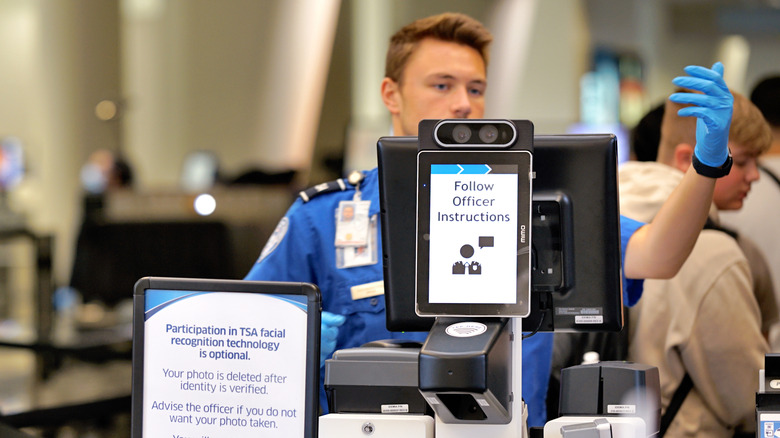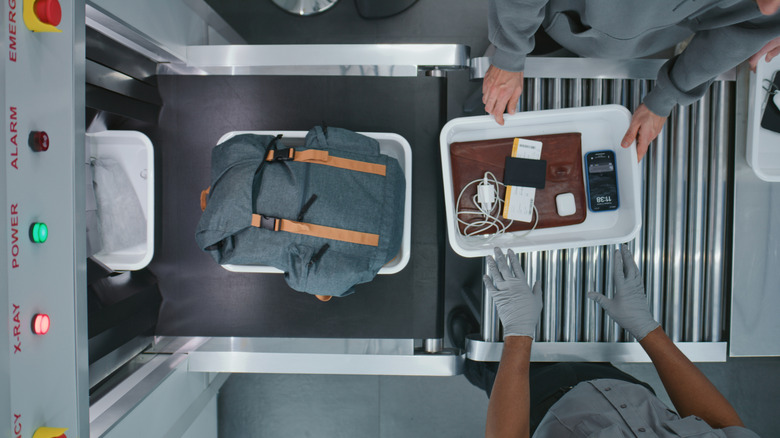The Important TSA Rule To Remember When Bringing Electronics On A Flight
Frequent travelers know routines for going through TSA security checkpoints before boarding a flight: no liquids over 3.4 ounces, no sharp objects like a Swiss Army Knife, and no forgetting your ID. However, no matter how well you think you know TSA security procedures, it may seem like there's always something waiting to trip you up. After all, a quick look at the TSA website explaining what you can bring in your carry-on luggage reveals a long list of exceptions, restrictions, and easy-to-miss rules. It's enough to make even the most seasoned traveler feel a bit lost.
When it comes to electronics, things get even more complicated. There are several electronics the TSA doesn't allow in carry-on baggage; even if you already know which electronics you can take with you on a flight and which ones you can't, there's another rule you may not be aware of: your electronics must be charged. If a TSA officer asks you to power on your device and you can't, you won't be allowed to bring it on the plane.
TSA's primary job is to protect aviation security and keep us safe when we fly. A big part of that is the security screening, where TSA officers work to prevent dangerous items from being brought onto an aircraft. While a powered-off device may seem perfectly harmless to you, U.S. intelligence and law enforcement agencies have determined that terrorist organizations have found ways to conceal explosives in electronic devices. As a result, TSA implemented a rule requiring all electronic devices, i.e., cell phones, tablets, and laptops, to be charged and able to power on when requested during security screening.
What is the TSA's power-on requirement for electronic devices?
While the charged device rule may come as a surprise, if you're familiar with it, you can avoid any delays going through a TSA security checkpoint. As explained on the TSA website, "Officers may ask you to power up your electronic device, including cell phones. Powerless devices will not be permitted onboard the aircraft." The guidance goes on to say that TSA says its officers won't access, read, or copy any personal data from your device during screening.
Ultimately, it's up to the TSA officer to decide if an item can pass through the security checkpoint. By having travelers' power on their devices, TSA officers can confirm they're real, functioning devices and haven't been hollowed out or otherwise tampered with to conceal banned items. If you can't turn your device on, TSA screeners can't confirm what it actually is.
To make your life easier, make sure your devices are fully charged before heading to the airport. That way, when you get to the TSA checkpoint, you'll be able to power them on without any problems. Become familiar with TSA's electronic rules before you start packing, so you know what's allowed in checked bags and what's not. Keep chargers or portable power banks with you so your devices are charged when needed.

